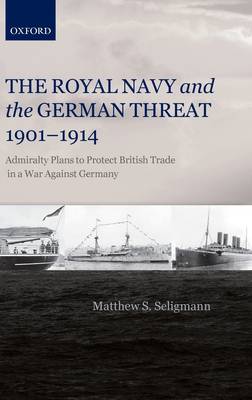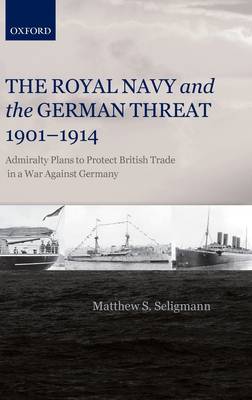
- Retrait gratuit dans votre magasin Club
- 7.000.000 titres dans notre catalogue
- Payer en toute sécurité
- Toujours un magasin près de chez vous
- Retrait gratuit dans votre magasin Club
- 7.000.000 titres dans notre catalogue
- Payer en toute sécurité
- Toujours un magasin près de chez vous
The Royal Navy and the German Threat 1901-1914
Admiralty Plans to Protect British Trade in a War Against Germany
Matthew S Seligmann
Livre relié | Anglais
265,95 €
+ 531 points
Description
When and why did the Royal Navy come to view the expansion of German maritime power as a threat to British maritime security? Contrary to current thinking, Matthew S. Seligmann argues that Germany emerged as a major threat at the outset of the twentieth century, not because of its growing battle fleet, but because the British Admiralty (rightly) believed that Germany's naval planners intended to arm their country's fast merchant vessels in wartime and send them out to attack British trade in the manner of the privateers of old. This threat to British seaborne commerce was so serious that the leadership of the Royal Navy spent twelve years trying to work out how best to counter it. Ever more elaborate measures were devised to this end. These included building 'fighting liners' to run down the German ones; devising a specialized warship, the battle cruiser, as a weapon of trade defence; attempting to change international law to prohibit the conversion of merchant vessels into warships on the high seas; establishing a global intelligence network to monitor German shipping movements; and, finally, the arming of British merchant vessels in self-defence. The manner in which German schemes for commerce warfare drove British naval policy for over a decade before 1914 has not been recognized before. The Royal Navy and the German Threat illustrates a new and important aspect of British naval history.
Spécifications
Parties prenantes
- Auteur(s) :
- Editeur:
Contenu
- Nombre de pages :
- 198
- Langue:
- Anglais
Caractéristiques
- EAN:
- 9780199574032
- Date de parution :
- 17-07-12
- Format:
- Livre relié
- Format numérique:
- Genaaid
- Dimensions :
- 163 mm x 234 mm
- Poids :
- 476 g







